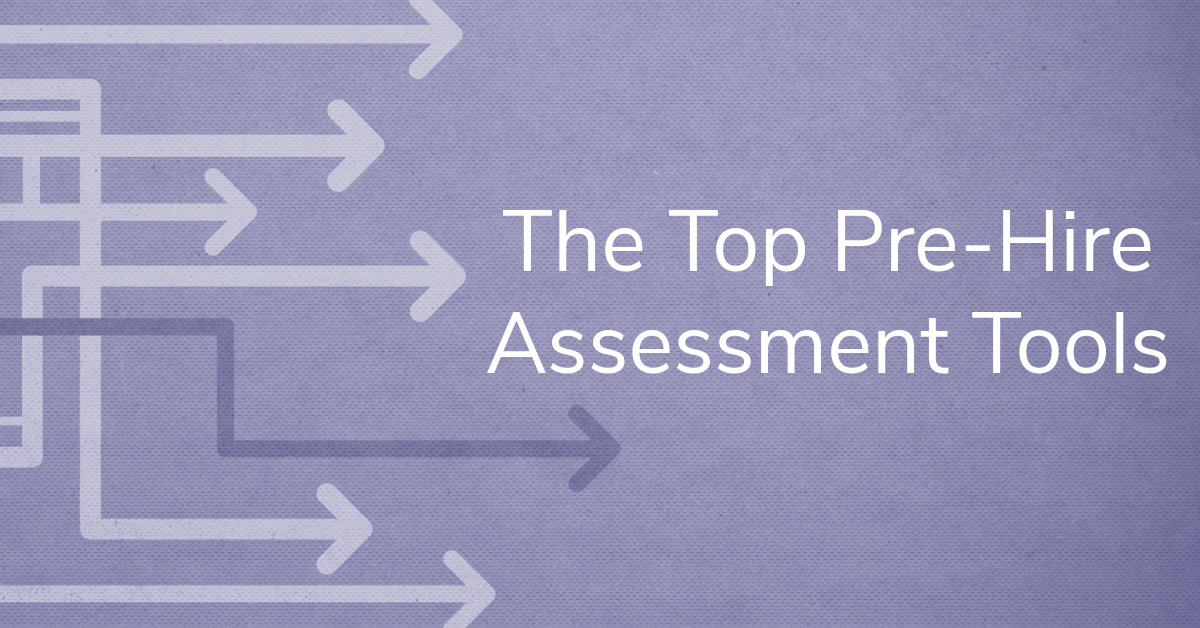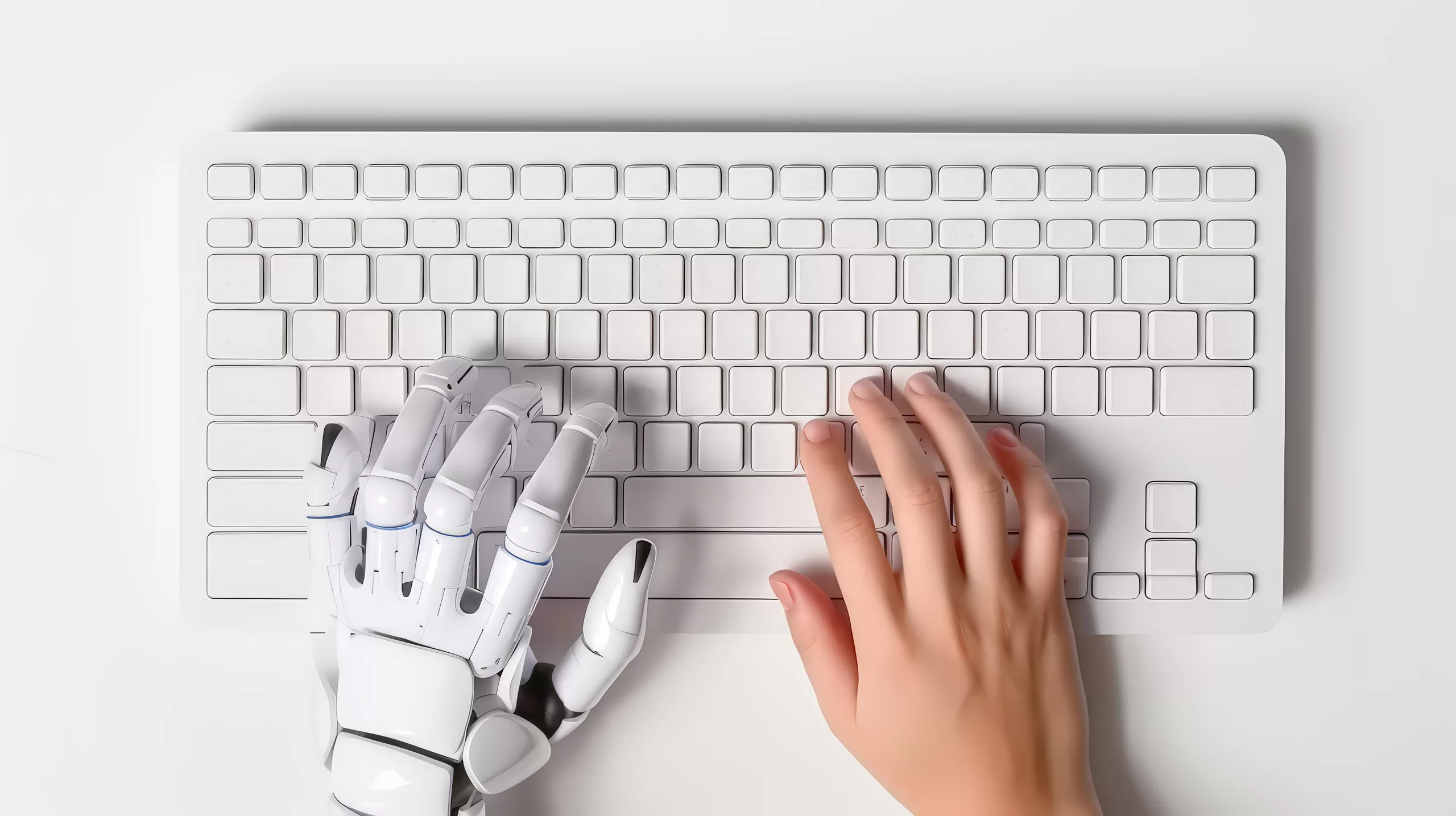In today’s competitive job market, speed and precision are everything. Companies face mounting pressure to hire the best candidates quickly while ensuring fairness and quality in their selection process. Artificial Intelligence (AI) has emerged as a powerful ally, reshaping how organizations approach hiring. From automating initial candidate screenings to predicting future performance, AI is making recruitment faster, smarter, and more efficient.
In this blog, we’ll explore five impactful ways AI is revolutionizing the hiring process.
Table of contents
- 1) Automated Candidate Screening: Reducing Time-to-Hire
- 2) Better Hiring Decisions Through Data-Driven Insights
- 3) Enhancing Candidate Experience Through AI-Powered Tools
- 4) Reducing Bias with Structured Screening Tools
- 5) The Future of AI in Recruitment: Smarter, More Integrated Tools
- Accelerate and Improve Hiring with Wonderlic
- FAQs Section
1) Automated Candidate Screening: Reducing Time-to-Hire
AI has become a powerful tool in candidate screening, rapidly analyzing resumes and applications to surface qualified candidates. However, Human-in-the-Loop (HITL) remains essential for ethical, legal, and practical compliance. Sole reliance on AI can introduce risks, including biased outcomes and legal disputes over how AI models are trained. Waving a “magic AI wand” won’t address these challenges—in reality, it could bring more headaches than benefits!
At Wonderlic, we don’t rely on AI to drive our screening process—it’s grounded in sound research and analysis. Instead, AI helps us scale and maintain job-specific scoring profiles, ensuring they remain aligned with evolving roles, skills, and industry requirements.
The worst mistake a company could make is using AI without human oversight. At Wonderlic, AI is applied where it makes the most sense, ensuring our tools remain fair, transparent, and job-relevant.
The Real Payoff: Faster Hiring Without Sacrificing Quality
By leveraging AI to support—but not replace—human decision-making, hiring teams can dramatically reduce time-to-hire without compromising accuracy or fairness. AI ensures that the most qualified candidates rise to the top faster, allowing recruiters to focus on meaningful interactions and final decisions.
According to HireVire, implementing pre-employment assessment tools can reduce time-to-hire by up to 50% (Source: HireVire).
While screening helps surface top candidates faster, making smarter hiring decisions requires going beyond initial assessments. That’s where data-driven insights play a crucial role.
Reduce resume review time by 50% – learn more about the ROI of Wonderlic Select.
2) Better Hiring Decisions Through Data-Driven Insights
In today’s digital landscape, hiring data, employee data, and organizational insights are more accessible than ever. However, raw data alone isn’t enough—it’s the ability to analyze, understand, and act on these insights that lead to better hiring decisions.
Historically, only organizations with significant resources and specialized analytics teams could effectively leverage large-scale hiring data. Today, AI tools have democratized access to these insights, allowing companies of all sizes to:
- Identify Key Success Indicators: Spot patterns in candidate traits, skills, and performance tied to long-term success.
- Address Gaps and Inefficiencies: Pinpoint bottlenecks in the hiring funnel and address where time and resources are being lost.
- Support Evidence-Based Decisions: Equip recruiters with concrete data to make smarter, more confident hiring choices.
How Data-Driven Insights Improve Hiring Decisions
- Fewer Guesswork Mistakes: With clear metrics and benchmarks, hiring managers can compare candidates objectively.
- Role-Specific Precision: Insights help align candidate profiles with specific job requirements, ensuring a better fit.
- Optimized Hiring Funnels: Data highlights inefficiencies in hiring stages, refining processes for faster hiring.
- Long-Term Impact: Insights extend beyond hiring, allowing HR teams to predict candidate performance and growth.
3) Enhancing Candidate Experience Through AI-Powered Tools
The hiring process isn’t just about finding the right candidate—it’s also about creating a positive, engaging experience for applicants. AI is playing a growing role in shaping this experience, from personalized job recommendations to clear, transparent feedback loops.
From the Candidate’s Perspective: Smarter Job Matching
Job boards and recruitment platforms are increasingly using AI algorithms to deliver personalized job recommendations tailored to an applicant’s skills, experience, and preferences.
- Time Savings: Candidates can quickly find jobs matching their expertise.
- Better Fit: Personalized recommendations increase the likelihood of a successful hire.
From the Business’s Perspective: Transparency and Communication
For employers, AI tools enable better communication and transparency with applicants. While Wonderlic doesn’t provide chatbots, we enhance candidate engagement post-assessment with:
- Candidate-Facing Reports: Clear, informative insights into performance and strengths.
- Improved Communication: Reports bridge gaps between candidate expectations and employer feedback.
Reducing bias lays the foundation for fairer hiring, but the future of recruitment lies in smarter, integrated AI tools.
4) Reducing Bias with Structured Screening Tools
Bias in hiring isn’t always overt—it often operates subtly, driven by unconscious preferences and assumptions. Even with the best intentions, humans are naturally susceptible to bias, which can lead to unfair hiring decisions. This is why structured, research-backed screening tools play a critical role in creating more objective hiring processes.
Common Hiring Biases to Watch Out For:
- Affinity Bias: Favoring candidates who share similarities with the interviewer, such as educational background or hobbies.
- Confirmation Bias: Giving more weight to information that supports initial impressions of a candidate.
- Halo Effect: Overemphasizing one positive trait, like attending a prestigious university, while overlooking other critical factors.
- Conformity Bias: Following the group consensus rather than forming an independent evaluation.
These biases—along with others like ageism, name bias, and gender bias—can have long-term consequences on team performance and workplace culture.
How Screening Tools Help Reduce Bias
Structured pre-employment screening tools, like those offered by Wonderlic, are designed to:
- Focus on Job-Relevant Data: Assess candidates based on job-specific skills, competencies, and personality traits.
- Standardize Evaluations: Apply the same benchmarks to all candidates to eliminate subjective judgment.
- Ensure Transparency: Use clear, research-backed scoring frameworks to make hiring decisions easier to understand and defend.
While AI can scale these tools efficiently, it’s Human-in-the-Loop (HITL) oversight that ensures fairness, prevents unintended biases, and maintains accountability throughout the process.
For more on reducing unconscious bias in hiring, check out Wonderlic’s guide: How to Reduce Unconscious Bias in Recruitment.
5) The Future of AI in Recruitment: Smarter, More Integrated Tools
The future of AI in hiring is all about smarter tools, deeper insights, and seamless integration with existing HR systems. But this future isn’t about replacing people—it’s about enhancing human expertise with AI-driven tools to create more strategic and scalable hiring practices.
Key Trends Shaping the Future of AI in Hiring:
- Adaptive Assessments: AI-driven assessments will dynamically adjust based on candidate responses, offering more precise evaluations.
- Virtual Interview Analysis: AI tools will analyze tone, confidence, and word choice in virtual interviews, delivering nuanced candidate insights.
- Skills-First Hiring: AI will shift focus away from resumes and toward matching candidates based on core competencies and demonstrated skills.
- Continuous Workforce Insights: AI tools will extend beyond hiring, tracking ongoing employee performance and suggesting tailored development paths.
What This Means for Companies
- Scalability: Organizations will be able to implement advanced hiring strategies across departments without overburdening HR teams.
- Improved Accuracy: Refined algorithms and increased human oversight will drive more precise hiring recommendations.
- Long-Term Workforce Planning: Businesses will align hiring decisions with long-term workforce stability and growth goals.
Wonderlic’s Perspective on the Future of AI in Hiring
At Wonderlic, we see AI as a powerful enabler of human expertise. Our focus will continue to be on:
- Evolving Scoring Profiles: Ensuring assessments stay aligned with changing job requirements.
- Actionable Insights: Providing organizations with clear, practical data for smarter hiring and employee development.
- Human Oversight: Keeping Human-in-the-Loop (HITL) as a critical safeguard for fairness and compliance.
The Takeaway: Smarter Hiring, Better Teams
The future of AI in recruitment isn’t about blind automation—it’s about empowering organizations with smarter, more data-driven hiring processes. Companies that embrace AI thoughtfully will not only reduce time-to-hire but also build resilient, high-performing teams aligned with long-term goals.
Accelerate and Improve Hiring with Wonderlic
Wonderlic’s solutions are designed to streamline candidate assessments and deliver actionable insights for smarter hiring. By combining sound research with scalable technology, Wonderlic empowers organizations to:
- Hire Faster: Reduce time-to-hire without sacrificing quality.
- Reduce Bias: Maintain fairness and consistency in hiring decisions.
- Enhance Candidate Experience: Provide clear, informative post-assessment feedback.
Wonderlic ensures your hiring strategies remain aligned with evolving job requirements while keeping human oversight at the core.
See Wonderlic in Action – Get a Demo Today
FAQs Section
AI is revolutionizing hiring by automating repetitive tasks and improving decision-making. Tools powered by AI assist with resume screening, candidate matching, and skill assessments, saving recruiters hours of manual work. AI also helps identify patterns in historical hiring data to optimize recruitment strategies and anticipate workforce needs.
Takeaway: AI enables companies to make faster, data-informed hiring decisions while maintaining accuracy.
AI is widely adopted across industries, including technology, finance, retail, and healthcare. Companies like Amazon, Google, and Unilever leverage AI for tasks such as resume parsing, candidate ranking, and predictive analytics. Startups and mid-sized companies also rely on AI tools to scale their hiring efforts efficiently.
Takeaway: AI is no longer exclusive to tech giants—it’s now an essential tool for businesses of all sizes.
Bias often occurs when AI algorithms are trained on historical datasets with embedded biases, such as favoring candidates from specific demographics or schools. Without oversight, these biases can perpetuate unfair patterns.
Takeaway: Human oversight (HITL) and diverse training datasets are essential for minimizing AI bias.
AI extends beyond hiring into broader employment applications, including onboarding, training, and performance management. It can recommend personalized learning paths, monitor employee progress, and identify high-potential talent for leadership roles.
Takeaway: Thoughtfully integrated AI benefits both employers and employees by supporting growth and efficiency.








